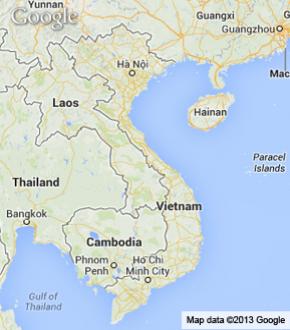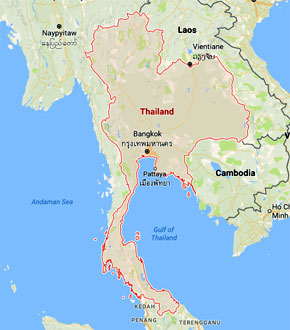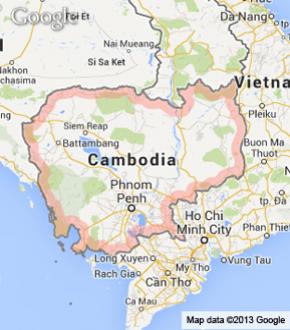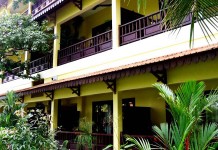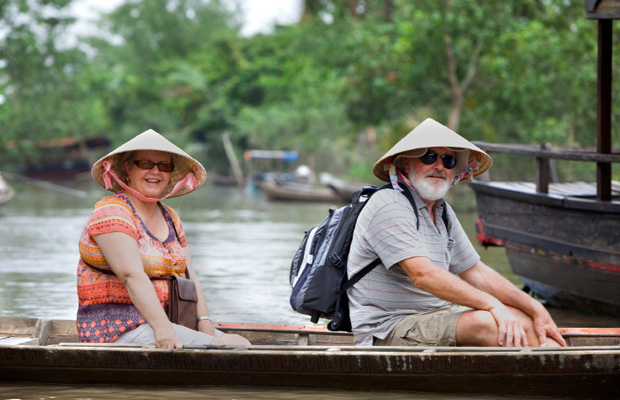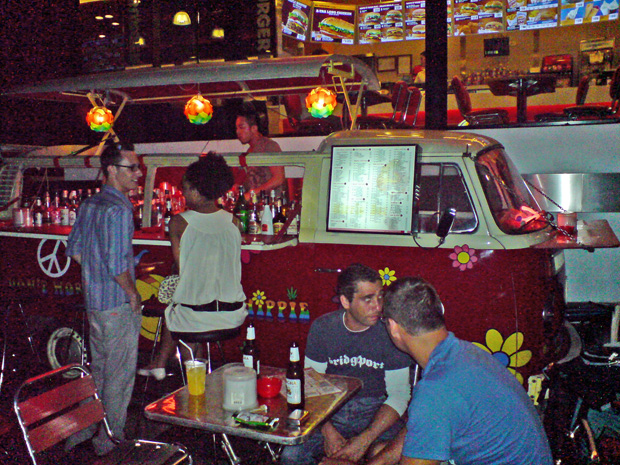The top 10 temples in Cambodia are hard to pick. After all, everyone has heard of the famous Angkorian temples, here; they are legendary, probably the finest complex of temples anywhere in the world. Angkor Wat is the most famous but the many others around the area and the ancient City of Angkor Thom create the most fascinating destinations for people on Holiday in Cambodia. Recent technological breakthroughs have enabled aerial mapping of the whole area and experts now know that all the temples were once part of one single urban conurbation. In its day it was the largest conurbation in the world and was not overtaken until the Industrial Revolution. These are the top 10 temples in Cambodia, mainly based on visitor numbers but also on their importance. Some when rediscovered, where in a terrible state of repair and have been restored using the anastylosis method. That is to say, the same materials and techniques were followed as closely as possible. Many of these feature in our complete Angkor Temple Guide, check it out for fully descriptions, it is packed full of information and good tips.
So here are the top 10 temples in Cambodia
10. Phnom Krom
Eight miles southwest of Siem Reap you will find the rocky outcrop known as Phnom Krom. A famous local legend, the Ramayana, tells of a story that the Monkey General, Hanuman, exposed the rocks while on a hunt for medicine. On top of the hill stands partially ruined temple of Phnom Krom. Built in the 9th Century, during the reign of King Yasovarman it was dedicated to the Hindu gods Shiva, Vishnu and Brahma.
It was constructed by placing laterite blocks on top of each other. Laterites are soil types, typical in this area. They are rich in iron and aluminium, the iron causing the red colour shown here. The walls are topped with a cornice. There are gates in the middle of each wall. The temple has three towers running in a line from north to south, each is dedicated to one of the three deities. The northern most to Vishnu, the middle one to Shiva and the southern one to Brahma. They sit on a solid platform and are accessed by climbing seven steps.
As for a tourist experience, in many ways the ride out from Siem Reap by tuk tuk is the real star of the show, it really is a delightful trip. The journey takes you out by the Tonlé Sap Lake, where you will see the traditional stilt houses. The temple is of significant cultural importance, though as a viewing experience, it is not in the same league as the major temples.
9. Baksei Chamkrong
This is a small temple on the left hand side as you enter Angkor Thom from the south. The location makes it a great short stop-off as you are on the way to the more famous temples in the ancient city. A Hindu temple it was dedicated to the Deity Shiva and used to house a golden statue of him. The building was started by King Harshavarman and completed by his son Rajendravarman who dedicated it also to his father.
As with many on these temples there is a legend that goes with it. The king was under siege and tried to flee Angkor, when a huge bird landed and allowed him to shelter under its wing. Baksei Chamkrong means “The Bird Who Shelters Under Its Wings”.
It is constructed from sandstone blocks and laterite, one of the first to ever use this technique, and has carvings on the sandstone. The main lintel is beautifully decorated with a carving of Indra seated on his triple headed elephant, Airavata. There are inscriptions on either side of the door. It is pyramid by design and stands some 40 feet high, clearly one of the top 10 temples in Cambodia.
8. Banteay Samré
This impressive temple is situated a quarter of a mile to the east of the East Baray. A baray is a manmade lake, this one is long since dry. The temple is about 5 miles due east of Angkor Wat, itself. The temple was built by Suryavarman II and Yasovarman II again in the early 12th century and is an Hindu temple but clearly in the same style as its more famous neighbour. The Samré were a local ancient ethnic people who inhabited the Kulen Hills and the word Banteay simply means citadel.
This temple really is worth making the effort to visit. Sadly over the years many of the temple’s treasures were plundered but the architectural style remains hugely imprtant. It is a beautiful spot, the moat in the interior has a floor made from laterite paving. There are many buildings around the moat which sit on raised bases, these are decorated with images of people framed by lotus buds.
7. Phnom Bakheng
This is well worth the visit especially at sunset when the view over Angkor Wat a mile to the northwest. Unfortunately it gets so many visitors that in addition to being one of the top 10 temples in Cambodia, it is now also regarded as one of the most threatened temples in the country. The World Monuments Fund has been working for a decade in partnership with Authority for the Protection and Management of Angkor and the Region of Siem Reap (APSARA), to try and conserve the temple.
This was built at least 200 years before Angkor Wat and in its time, was the most important Temple in the whole Angkor region. An inscription found at the Sdok Kak Temple in what is now Thailand is dated at 1052AD and state, “When Sri Yasovardhana became king under the name of Yasovarman, the able Vamasiva continued as his guru. By the king’s order, he set up a linga on Sri Yasodharagiri, a mountain equal in beauty to the king of mountains.” Experts have determined that this is a direct reference to Phnom Bakheng.
Phnom Bakheng represents Mount Meru, home of the Hindu gods. This status is emphasised by the temple’s hilltop location. Facing east, Phnom Bakheng is in a pyramid form of six tiers and is typical of the era. At the top level, five sandstone sanctuaries, in various states of repair, stand in a quincunx pattern, which means one in the center and one at each corner. Originally, 108 small towers were arrayed around the temple both at ground level and also on the various of its tiers, sadly most of them have collapsed through time. At sunset it earns its status as one of the top 10 temples in Cambodia.
6. Preah Khan
Preah Khan, meaning Royal Sword, was built in the 12th century for King Jayavarman VII. It is to be found northeast of the ancient city of Angkor Thom Angkor Thom to the west of the Jayatataka baray, with which it was strongly associated. In its day this was home to a very impressive community containing about 100,000 temple officials and servants. It is quite a complicated affair, having many rectangular galleries placed around a Buddhist sanctuary. Around this are smaller Hindu temples and others that were added later.
Similar to Ta Phrom it has been left mainly as it was found, with jungle and forest almost taking over it. When it was rediscovered in 1927 a partial clean up was started. The initial clearing was carried out over a period of 5 years, then a partial anastylosis in 1939. It is a fine balance getting it right. Some of the free standing statues were removed for safe keeping and in some parts it has been left exactly as it was. In 1991, maintenance of the site came under the control of the World Monuments Fund. It has continued this cautious approach to restoration, believing that to go further would “involve too much guesswork”. Quite simply they prefer to respect the part ruined nature of the temple.
5. Preah Vihear
Preah Vihear sits right on the border with Thailand and has been the subject of many disputes, some of them violent over the years. Both the Thais and Cambodians keep an armed force close by the temple, ready to fight at any moment. It stands on a 1722 feet high cliff in the Dangrek Mountains and whilst having strategic importance also rewards visitors climbing up to it, with magnificent views over both countries. In 1962 The International Court of Justice in the Hague, Netherlands ruled it to be in Cambodia. In 2008 the temple was inscribed onto the UNESCO list of World Heritage Sites.
It was built during the reigns of the Khmer kings Suryavarman I (1002–1050) and Suryavarman II (1113–1150). Starting of as a Hindu shrine, it converted to Buddhism later on as did many of the temples in Cambodia. It is quite different from other temple mountains but still is a representation of Mount Meru, the home of the Gods.
It was the last place in Cambodia to fall to the forces of the Khmer Rouge. As Pol Pot’s troops stormed the site on May 22nd 1975, the soldiers defending it walked over the border into Thailand and surrendered. It is, one of the most fought over and certainly one of the top 10 temples in Cambodia.
4. Banteay Srey
Sometimes spelt as Banteay Srei, this 10th century temple was dedicated to the Hindu God Shiva. It is found near the hill of Phnom Dei which is about 16 miles to the north east of where the majority of the temples are located. Unusually this was built using red sandstone, which gives it a totally unique appearance. It is extremely small by any standards, almost a miniature of Angkor Wat. For this reason it is believed to be the blueprint for its more illustrious cousin.
It was built in the mid 10th century and consecrated in April 967 A.D and was the only Angkor Temple not built by a King, it is believed to have been built by a courtier to King Rajendravarman II, a man called Yajnavaraha. When it was built, Banteay Srey was surrounded by a town called Īsvarapura. The Modern name means Citadel of The Women and probably relates to the incredible intricate bas-relief work on the walls. Many say that the work is so delicate that it must have done done at he hands of women folk. Other speculate that the name relates to the many Devatas that are carved here.
3. Ta Phrom
For many Ta Phrom is their favourite of all the temples, it is certainly one of the most visited. This could of course be down to the fact that it was the site of the movie Tomb Raider and Angelina Jolie was a frequent visitor. The ramshackle breakfast bars to the left hand side of Angkor Wat as you walk over the causeway to the entrance all carry the names of famous stars from today. Angelina Jolie’s is next door to Lady Gaga’s.
The fact is more likely though, that people are fascinated by the look of the place. When all these temples were re-discovered, they were completely overgrown by jungle. The massive trees that were found growing through the stone walls of Ta Phrom were left exactly as they were. When the Khmer Empire fell in the 17th century, Ta Phrom was abandoned and fell into neglect for centuries. Then as conservation and restoration of the temples began in the early 21st century, the École Française d’Extrême-Orient decided to leave Ta Phrom as it had been found, in their words as a “concession to the general taste for the picturesque.” Maurice Glaize, the leading Angkor scholar said that Ta Phrom was singled out as it was “one of the most imposing and the one which had best merged with the jungle, but not yet to the point of becoming a part of it”. Extensive work has been done however to stabilise the ruins, in order to permit access, and to maintain “this condition of apparent neglect.”
Ta Phrom’s design is as a typical “flat” Khmer temple; five walls surround a central sanctuary. As with most Khmer temples, it is oriented to the east, with the temple proper set back to the west and running along an east-west axis. The outer wall measures 3230 by 2130 feet and enclose an area of 160 acres. This would have once been the site of a substantial town, now totally swallowed up by the jungle.
It has a haunting beauty and tranquil nature of Ta Phrom stays with anyone who visits it. It will leave lasting memories and a desire to return and is always in any list of the top 10 temples in Cambodia.
2. The Bayon
This is a truly amazing temple, in the heart of the Angkor Thom complex. Its most memorable feature are the 216 carved, smiling faces of that adorn the 37 standing towers that make up the whole temple. The faces all face towards the cardinal points. Who they represent has been a matter of debate for decades. One argument is that they represent Loksvara, Mahayana Buddhism’s compassionate Bodhisattva. Another school of thought is that it’s a combination of Buddha and Jayavarman VII. This amazing temple of Bayon was Jayavarman VII’s state-temple, it represents the pinnacle of his enormous building campaign.
The bas-reliefs that cover much of Bayon on the exterior walls of the lower level and on the upper level where the stone faces reside, are of a superb quality. The bas-reliefs on the southern wall depict real-life scenes from an old sea battle between the Khmer and the Cham. No-one is sure whether this represents the Cham invasion of 1177AD or a different later one in which the Khmer were victorious. The extensive carvings of unique scenes of everyday life that are interspersed among the battle scenes, are even more revealing and interesting. They depict market scenes, cockfighting, chess games and childbirth. There are also some unfinished carvings on other walls. The possible reason for this could have been death of Jayavarman VII which brought about the end of his building campaign. Reliefs on the inner walls were thought to have been carved at a later date, influenced by the Hindu king Jayavarman VIII.
Immediately in front of Bayon is the fascinating Terrace of the Elephants and the Terrace of the Leper King. The whole Angkor Thom site, represents the idea of King Jayavarman VII and the culmination of his impressive building work. Today it is a fascinating look back in history and makes for a wonderful day sightseeing. In many ways it is my favourite among the top 10 temples in Cambodia.
1. Angkor Wat
There really only could be one number one, the stunning Angkor Wat, the largest temple of any kind in the world and the most important Buddhist temple in the world. Ironically it was built in honour of the Hindu God Vishnu. King Suryavarman II had it built early in the 12th century, breaking with tradition. It is by any stretch of the imagination a staggering achievement. The centre tower stands an impressive 699 feet high, the exterior walls are 2.2 miles long and every inch of it is carved to the most stunning standard. Outside of the walls is a moat some 40 feet wide, inside three separate galleries, each one higher than the next lead to the central tower.
One of the most amazing statistics about Angkor Wat is the fact that it was completed in just 32 years. To put that into context, Gloucester Cathedral in England probably had a similar amount of work done on it, it took 400 years to complete. The temple is just 3.4 miles north of Siem Reap and the ticket office is on the way out of town on the main road.
Most people prefer to go at dawn and get that all important photo of the sun rising over the temple, the money shot. It is worth bearing mind that this is not necessarily the best way to go. Many mornings are misty and overcast and the sun will not be invisible. Also there is always thousands of people lining the walls to get this photo. If however you go in the early evening you can catch the temple as the sun goes down and it will be less crowded. This also gives you the advantage of your ticket being valid for the next day as well. So you can stroll round all the other temples at your leisure. If you insist on going in the morning, you can walk into Angkor Wat on your own as everyone else waits for the sun rise. Visiting this giant among the top 10 temples in Cambodia in this way, will give you about 45 minutes of almost complete solitude in one of the most sacred places on earth, unmissable.
The best way to travel is to hire one of the local tuk tuk drivers. They will take a full days hire and know the best way to go round the whole temple complex. If you go for the day and a half on one ticket option, this gives you the advantage of taking a leisurely lunch, at the hottest time of the day and resting.


